Print Books are Better
I know you already know this, but it’s nice to see it affirmed with Disney video clips and cool photos: 10 Reasons Why Real Books Are Better Than E-Books. (via Ukiah Blog)
I know you already know this, but it’s nice to see it affirmed with Disney video clips and cool photos: 10 Reasons Why Real Books Are Better Than E-Books. (via Ukiah Blog)
Have you taught a terrific literature class recently? Contributions are solicited for a web resource focused on teaching English literature at the college/university level, Teaching College Literature, launched in 2012.
Teaching College Literature welcomes submissions in the following areas:
• Articles (length: 2500-6000 words);
• Sample syllabi and/or assignments: please include a brief commentary on the course and remove personal information such as addresses and phone numbers;
• Teaching tips (length 1500-3000 words);
• Media: videos, PowerPoints and other media;
• Suggestions for links to resources including journals, blogs, websites and other media.
The August issue of Glimmer Train’s eBulletin features craft essays by writers whose works have recently appeared in Glimmer Train Stories:
Gillian Burnes offers a humorous but pointed commentary (and writers challenge) on the “Two Minds” of writers – free association and restraint. Long division, listing, and narrating the thoughts of a cockroach are just a few of the practices she has put herself through.
In “Poking the Tiger – Thoughts on Characterization and Story-Building,” Daivid Bock writes: “We all carry contradictions and trivialities within us, and not everything has to line up perfectly in a character’s profile. In fact, I’d say the jagged edge of paradox and contradiction brings a character closer to the truth of what it is to be human.”
Also on the topic of character, Tracy Guzeman begins her brief essay with, “I know what my characters look like.” But ends with, “…an elusive and movable object.” The in between is what writers “settle for,” which can, she argues, have great benefit.
And Tom Kealey focuses his essay on dialogue, acknowledging that crossover point where “characters start saying thigns I didn’t quite expect them to say,” and instilling the importance of the reader and writer reconnecting “to the playfulness and power of the spoken word.”
The bulletin is a free, monthly publication.
Cuban Newrrative: e-Merging Literature from Generation Zero is an online serial anthology of writers of “Generaci
This month’s Broadsided collaborators are poet Camille Dungy (Smith Blue) and artist Caleb Brown. Their work “Where bushes periodically burn, children fear other children: girls” is available for download and postering around your city. Become a Broadside Vector – it’s never too late to start!
Brevity Poetry Review has announced via email that they are closing the magazine permanently. Unfortunately, it appears as if the website and the archives no longer exist. “I offer my sincerest apologies and thank you for your understanding,” writes the editor
Knock Magazine, a print magazine that has published sixteen issues since its start, is now closing its doors to submissions, and the publication is being put on hold indefinitely. However, the site will remain online so that writers and readers can inquire about subscriptions, back issues, and copyrights. Until they last, back issues can be purchased by contacting the editor.
The Summer 2013 issue of Banipal is dedicated to fiction from Kuwait. It features contemporary writing from 17 Kuwaiti authors, all from ranging backgrounds: Sulaiman al-Shatti, Ismail Fahd Ismail, Suleiman al-Khalifi, Fatima Yousif al-Ali, Laila al-Othman, Waleed al-Rajeeb, Taleb Alrefai, Thuraya al-Baqsami, Fawziya Shuwaish al-Salem, Bothayna al-Essa, Saud al-Sanousi, Yousef Khalifa, Basima al-Enezi, Ali Hussain al-Felkawi, Hameady Hamood, and Mona al-Shammar.
“This issue of Banipal has required an enormous amount of time and effort, more, in fact, than any previous issue,” writes Editor Samuel Shimon. “In the early years of Banipal, perhaps around 2001, we began debating the idea of producing a feature dedicated to Kuwaiti literature. After some deliberation, we decided to save the idea for later. On the one hand, Kuwaiti literary production still appeared to be dominated by a preoccupation with the effects of the Iraqi invasion of Kuwait and the country’s subsequent liberation. Overall, they represented a direct reaction to the crime committed by the Arab neighbor. On the other hand, we did not perceive any new ‘ faces’ emerging on the literary scene, and had already published a number of Kuwaiti authors individually . . .
“From 2005 to the present day, however, it is fair to say that many new literary talents have emerged, particularly in the novel and short story genres . . . In the summer of 2012, the idea . . . was raised once again, this time by celebrated Kuwaiti author Taleb Alrefai. . . I remember telling him that, for Banipal to produce such an issue, I would have to visit the country, in order to experience its literary scene directly and meet with its authors . . .”
That following December, the Cultural Circle invited him to visit, and once he returned they spent a great deal of time selecting pieces for this issue. He writes, “It is a great pleasure to present this wonderful selection of Kuwaiti literature to you and I hope you enjoy reading it.”
Poetry East‘s Spring 2013 issue focuses on the composition process with the special “Origins,” in which “poets revisit their poems and consider the circumstances under which the poem was written.” Editor Richard Jones writes, “these extraordinary poems and wise essays of ‘Origins’ collectively articulate my belief that poetry is—must be—passionate, urgent, necessary, and deeply human.”
Featured poets include George Bilgere, Michael Blumenthal, Laure-Anne Bosselaar, Jared Carter, Susanna Childress, Stephen Dunn, James Galvin, Chris Green, Rob Griffith, Jeff Gundy, Andrew Hudgins, Meg Kearney, Kathleen Kirk, Ted Kooser, Jay Leeming, Linda Pastan, Donald Platt, Susan Blackwell Ramsey, James Reiss, Danielle Sellers, Clemens Starck, Mark Turcotte, Leslie Ullman, Connie Wanek, C. K. Williams, Jeff Worley, and Bill Zavatsky.
Adanna Literary Journal is supporting an anthology of writing from 7th and 8th grade students of MES, New Jersey that was written on the night of Hurricane Sandy as well as during the aftermath. All profits will go to the Manasquan Area Ministerium discretionary fund for Sandy-affected individuals/families and “towards the new playground in Manasquan, NJ which will be dedicated in honor of Newtown children.” You can purchase the anthology, here, on the magazine’s website.
Here is a blurb about the issue from Adanna: “Included amid this collection of 42 heartrending student essays are excerpts from 74 equally moving student essays that space would not permit us to print in full. These excerpts are included under four themes central to the students’ experiences of Hurricane Sandy: Scar, Chaos, Aftermath, Restore. Together, the first letters of these themes intentionally spell the word scar.
“Hurricane Sandy has indeed left a scar on these young people, their families, their communities. The superstorm has forever scarred their beloved Jersey Shore landscape. Yet time and attentive care heal the wounds of the scar, creating newness and strength. As the poet and story-teller Linda Hogan wrote, ‘Some people see scars, and it is wounding they remember. To me they are proof of the fact that there is healing.’ There was the storm, and there is still some chaos and plenty of work to be done in aftermath, but these students, their families, their communities, and their landscape are rebuilding…they are committed to RESTORE THE SHORE, and these essays are a healing balm for the scars of all who wrote them and for all who will read them.”
Glimmer Train has just chosen the winning stories for their May Short Story Award for New Writers. This competition is held quarterly and is open to all writers whose fiction has not appeared in a print publication with a circulation greater than 5000. The next Short Story Award competition will take place in August. Glimmer Train’s monthly submission calendar may be viewed here.
1st place goes to Gillian Burnes of Gardiner, ME. She wins $1500 for “Transit” and her story will be published in Issue 92 of Glimmer Train Stories. This is Gillian’s first fiction publication. [Photo credit: Deirdre Gilbert.]
2nd place goes to S. A. Rivkin of Minneapolis, MN. He wins $500 for “How to Survive a Non-Funeral.” This story will also be published in an upcoming issue of Glimmer Train Stories, increasing his prize to $700. This is his first fiction publication.
3rd place goes to Aaron Guest of Grove City, OH. He wins $300 for “The Hecklers.” This story will also be published in an upcoming issue of Glimmer Train Stories, increasing his prize to $700. This is his first fiction publication.
A PDF of the Top 25 winners can be found here.
Deadline soon approaching! Very Short Fiction Award: July 31
Glimmer Train hosts this competition twice a year, and 1st place has been increased to $1500 plus publication in the journal. It’s open to all writers, no theme restrictions, and the word count must not exceed 3000. Click here for complete guidelines.
The winner of the second annual Poem of the Year Contest put on by Arc Poetry Magazine is Shane Neilson for “The Barn.” The judges said, “the poem plays between two worlds, a derelict barn and a body in sickness, without losing its focus or giving the allusion up to a simple denouement. Its syntax is synaptic and full firing. This is a complex and arrhythmic poem that eschews easy vocabulary and cursory readings but, given the space full attention, its meanings build and twine together like DNA.” Along with this poem, you can also read, in the Summer 2013 issue, both the editor’s and the readers’ choices among the submissions.
The issue also features Mike Algera, Jesse Anger, Tammy Armstrong, Gerard Beirne, andrea bennett, Gregory Betts, Mike Caesar, jesse chase, Margaret Christakos, and many more.
theNewerYork, a relatively new print journal, has a great online feature called the Electric Encyclopedia of Experimental Literature (theEEL). To read some great content, all you have to do is go to theEEL, and then filter by Funny/Serious, Visual/Words, Short/Long, and Liked/Disliked. Or you can choose a literary form, or simply click “Random!” to generate some pieces that are, well, randomly selected.
While you’re at it, check out theNewerYork’s Fictional Glossary. “Think of it [as] an Urban Dictionary except not entirely maintained by bros. While at times poetic and stern, the definitions tend to circle around humor and cynicism.”
The summer issue of The Missouri Review includes a special feature on Houdini. “Many fascinating things are known about Houdini,” writes Editor Speer Morgan, “partly because he was an assiduous collector of his own materials and also of rare books and gear concerning the history of magic. There are also so many myths and partial truths about him, which this feature tries to clarify, including stories of his death at age fifty-two and the nature of his relationship with the all-powerful milieu of spiritualism.” The feature, by Kristine Somerville and Morgan, includes history, photographs, and poster/advertisements for his shows.
The issue also includes a piece by Peter Selgin on New York; a piece by Peter LaSalle on Paris; and new work from Aaron Baker, Michael Benedict, Lania Knight, Peter Levine, Nathan Oates, Dan O’Brien, Pamela Painter, Diane Seuss, and more.
In a piece, which rests in a great collection, in Booth‘s current issue, Chuck Klosterman discusses the difference between writing nonfiction and fiction. In the interview with him by Chris Speckman, Klosterman talks about how he started his writing career by writing for the college newspaper, and he only writes pieces that gets published–“If I’m not going to write about something, I’ll just think about it. I don’t need to share it with other people. However, I think sharing it with people is a great way to live. The process of writing is always pleasant . . The process of publishing is often not . . . But you have to publish in order to keep writing. That’s just the way it works.”
And through his experience of writing, he says that writing novels is much more difficult than writing essays and nonfiction:
“So you’re doing this interview with me right now, and what would be the best thing that could happen from your perspective? It would be if I sad something that made no fucking sense whatsoever, if I said something that was jut crazy and a total non sequitur. Or if I was talking to you and said, ‘Oh, I’m looking out my window right now, and I’m seeing a murder happen.’ THat would be great for your story, because in nonfiction, what you’re looking for are things that make no sense. Those are the moments of tension in a nonfiction piece . . . But in fiction, people hate that. People are always looking for the reality of a fake world that accurately reflects their world. So you’re constantly looking at these problems and saying, What is the most reasonable thing that could happen here? What could happen here that would make somebody say, ‘I could totally see that happening.'”
Get the latest issue to read more of this compelling interview, as well as to access an interview with Charles Simic; lots of new comics, fiction, nonfiction, poetry, and “greeting cards”; and an attractive and compactly designed magazine.
Wow! I guess last week’s litmag covers were well loved by others too; the post was our top viewed post this month. Here are some more for this week:
Booth‘s print issue number 5 not only contains great content, but it also features the cover art Fillmore by Kevin Cyr.
Seneca Review‘s cover is Bulbouscarcinotopia by Mary A. Johnson: red and yellow beet dye, concord grapes, pomegranate, acetone photograph transfer, colored pencil, digitally altered photographs and ink, 2013.
Notre Dame Review‘s front cover art is The Storm, oil on canvas, 2011, by Alex Gross.
In case you missed it, we wanted to let you know that the literary magazine reviews for July have been posted; and this month, there are a lot. Check out reviews of issues of:
Birmingham Poetry Review
The Bitter Oleander
Cactus Heart
Chicago Review
Concho River Review
CutBank
The Georgia Review
Grist
Gulf Coast
High Desert Journal
Jonathan
Literal
The London Magazine
NANO Fiction
Pembroke Magazine
Post Road
Quiddity
Stealing Time
The winner of the 2013 Willow Springs Fiction Prize, featured in the Fall 2013 issue of the magazine, is Robert Long Foreman with his piece “The Man with the Nightmare Gun.” Here is a small excerpt:
I am not a serious man. I thought Carol understood this about me by our fifth date. I thought it was something I’d established the night of our third date, after we had sex the first time. We lay together for an hour afterward, discussing the vast range of bra sizes and the prehistoric giant sloth, extinct now for thousands of years. It stood twenty feet tall and had massive claws, Carol said.When she added that people who lived when the sloths roamed the earth didn’t wear bras, I said, “They were the Greatest Generation.”
She laughed.
The rest of the issue features poetry by Kim Addonizio, Warren Bromley-Vogel, Denver Butson, Nicole Cooley, Sara Henning, Nora Hickey, Kate Lebo, Cate Marvin, Mark Neely, Keith Ratzlaff, and Ginny Wiehardt; fiction by Maxim Loskutoff and Aurelie Sheehan; and interviews with Steve Almond and Susan Orlean.
The summer 2013 issue of The Georgia Review features a special treat, a long-ish piece by Judith Kitchen titled “Circus Train.” I say “long-ish” because it hasn’t really been defined. Read Editor Stephen Corey’s explanation:
“While reading and rereading Kitchen’s segmented but forcefully interwoven study of memory and mortality, I’ve been led to wonder, briefly, whether a book of nonfiction—which at its exploring and argumentative best is by nature essaying—deserves to be accorded a potently developed but physically diminutive sibling, as the novel has come to have the novella in its family. (Of course, ‘short story’ often wants to claim ‘novella’ as kin, too, by proudly calling it ‘long story.’) Alas, ‘essayla’ is merely cute and ‘long essay’ pedestrian, so I must leave you to your own categorizing as you read this inventive, moving, and all-too-soon ended ‘Circus Train.'”
The rest of the issue features Scott Russell Sanders, David Griffith, Jerry McGahan, Bruce Bond, Todd Boss, Rebecca Cook, Sharon Dolin, Charles FOrt, Al Maginnes, Jack Ridl, and Robert Wrigley, as well as some amazing art and some reviews.
Continuing on the with tradition, here are this week’s covers that caught my eye from literary magazines that came in this week:
Versal, with the line “A Journal is a Fish,” has the cover of a dead fish: “We’ve never chosen an image that so compellingly captures the work within an issue,” writes the editor.
Willow Springs Fall 2013 issue features Madly in Love by Joan Snyder done with oil, acrylic, herbs, fabric on linen, in 2003.
Image‘s Spring 2013 cover features Anselm Kiefer’s Book with Wings, 1992-94, made with lead, tin, and steel.
Digital America is a new online journal venture from the University of Richmond that seeks to publish exceptional student work. “We believe that Millennials have a unique perspective on the impact of digitization. We also believe that student work is often left undiscussed both in the classroom in in the larger academic community. We are looking for essays, commentary, new media projects, short films, digital art, and documentary pieces that engage digitization and/or digital culture and American life. Our definition of ‘American’ life is broad and includes the role of globalization on American culture.”
Submissions are rolling, but all submissions intended for the October 14th deadline are due by September 14th.
Publication date of issue no. 1: October 14th
Please see website for further submission information: www.digitalamerica.org
This month’s Broadsided collaborators are poet Robert Wrigley (The Church of Omnivorous Light: Selected Poems and Anatomy of Melancholy & Other Poems), and artists Stacy Isenbarger and Kat Clancy, who each contributed art to create two separate broadsides. Download them and post them around your community.
Cartoonists At Risk and Their Defenders is a special issue published by Sampsonia Way: An Online Magazine on Literature, Free Speech and Social Justice: “Cartoonists Rights Network International (CRNI) was the first cartoon-focused human rights organization when it was founded in 1992. Created by Sri Lankan cartoonist Jiffry Yoonis and development consultant Robert Russell, CRNI collaborates with a network of cartoonists from around the world. These affiliates keep the organization informed on what is happening to their colleagues in their respective countries. Sampsonia Way spoke to co-founder Robert Russell and four of CRNI’s affiliates, located in the most dangerous countries for political artists. In this series we present these affiliates and a slideshow of cartoons from their country.”
THE NEWTOWNER literary magazine has created a special tribute issue dedicated to its hometown: Newtown, CT, where the Sandy Hook Elementary School shooting took place last December.
Editor Georgia Monahan writes: “The Newtowner is a one-of-a-kind arts and literary magazine that showcases the work of emerging and established literary, visual, and performing artists from the local area and across the nation. The publication’s mission is to celebrate creative community and the life-affirming power of literature and the arts. In light of the events of 12/14/12, this mission has never been more relevant and important. The upcoming issue will be a special tribute issue offered as a healing gift to the town of Newtown. By its very nature it will be a publication of historic significance.
Call for sponsorship: Our hearts’ desire is to provide complimentary copies to the families of Sandy Hook Elementary School, as well as the greater Newtown community. We are looking for individual and corporate sponsor funding to achieve this goal. Please contact [email protected] to express your interest.
Our aims for this issue are to:
Celebrate the people, beauty, culture, and community spirit of Newtown, CT
Remember those we love and lost
Recognize and give artistic expression to the grief we have experienced
Highlight the role of the arts in healing and the arts’ ability to nurture our humanity
Focus on our love, faith, and hope for the future
Featuring contributions from:
Nationally acclaimed authors and illustrators such as: Wally Lamb, Lois Lowry, Katherine Paterson, and Steven Kellogg
Pulitzer Prize-winning poet Yusef Komunyakaa
Sesame Street’s Alan Muraoka
National leaders such as Senators Richard Blumenthal and Chris Murphy
Newtown’s First Selectwoman Pat Llodra
Newtown faith leaders such as Rabbi Shaul Praver
Newtown educators such as Newtown High School Principal Chip Dumais and Reed Intermediate teacher Gael Lynch
Newtown High School students
Sandy Hook Elementary School parents David Wheeler and Sophfronia Scott
Sandy Hook Elementary School staff member Cindy Carlson
Sandy Hook Elementary School student artists Chase Kowalski, Jessica Rekos, and Avielle Richman
Thank you in advance for whatever help you can offer in creating this healing gift to Newtown.”
To learn more about The Newtowner please visit:
www.thenewtownermagazine.com
Facebook: www.facebook.com/TheNewtowner
Twitter: @TheNewtowner
Founded in 2009 by Sally Molini, Karen Rigby, and Fiona Sze-Lorrain Cerise Press was an international online journal based in the United States and France “with an aim to build cross-cultural bridges by featuring artists and writers in English and translations.” After four years, Cerise Press has published their final issue with Summer 2013, Volume 5 Issue 13. Filled with poetry, works in translation, art, reviews, and essays, the website will remains as an archive. Our thanks to the editors for all their work helping writers contribute to and readers benefit from this broad literary landscape. Please enjoy their final issue!
New nonfiction from The Writing Disorder summer 2013 issue includes Challenging the Myth of Female Frailty in the 21st Century: Insight on coed competition in hardcourt bike polo by Krista Carlson. I have never even heard of hardcourt bike polo, so it was fun to be introduced to it in the context of Carlson’s personal experience playing the game. Her perspective, which includes some history of Title IX and conversations with a number of players, is one to consider for all sports in which there is a gender divide.
Tupelo Press has announce that Kathleen Jesme has selected Chad Parmenter’s Weston’s Unsent Letters to Modotti as winner of the 2012 – 2013 Snowbound Chapbook Award.
Chad Parmenter’s poems have appeared in Best American Poetry, Kenyon Review, and Harvard Review. He received his Ph.D. from the University of Missouri, and is currently a visiting assistant professor at Niagara University.
Finalists in alphabetical order:
John de Stefano of New York, New York for From: Three-Body Problems
Eric Elshtain of Oak Park, Illinois for When Will We Begin?
Gabriel Jesiolowski of Seattle, Washington for entry for silos
Karen Kevorkian, of Culver City, California for Improbable Proximities
Y. Madrone, of Portland, Oregon for stripe
Matt McBride of Columbus, Ohio for City of Motels
JoAnna Novak of Greenfield, Massachusetts for Secrets
Heather Sellers of Holland, Michigan for The Vine
Page Hill Starzinger of New York, New York for vortex street
Cheryl Clark Vermeulen of Jamaica Plain, Massachusetts
for Thyroid and Other Matters
Sharon Wang of Queens, New York for Microphones, Bread, and Love
Margaret Young of Beverly, Massachusetts for Blight Summer
World Literature Today’s July/August issue features our four-legged friends, dogs to be more exact. Esther Tusquets, Mark Tredinnick, Jean Rolin, and Jacques Roubaud each contribute a piece about dogs. The section is titled “Four-Legged Fictions: Writers and Their Canine Characters.” Here is a small sampling from Tredinnick’s “On Hamock Hill”:
This is my devotion, then: to walk sometimes
with the dog through the sclerophyll
Cathedral of the morning. To let myself
Off my lead and follow a half-made track,
thinking a dilapidated liturgy,
Through bracken fern and native raspberry, three kinds
Of gum and a hundred kinds of weed,
toward nowhere in particular.
“For me, losing the chance to be a writer is worse than being imprisoned. To keep freedom of expression, I have to create. In other words, freeing the words is more important for me than freeing myself.”
From Burmese writer Ma Thida’s keynote speech delivered on June 23 at the Edinburgh World Writers’ Conference, Kuala Lumpur. Edited version available on The Nation.
Poetry fans! Postcard fans! This is your dream come true! The 2013 August Poetry Postcard Festival!
Sign up! It’s simple, fun, and inexpensive. The premise: You get a list of names and addresses. You start with the person below your name and go through the list. One per day. You write a poem on a postcard and send it to the recipient, and then you also start getting poetry postcards sent to you.
Rules? Well, one biggie that some argue the doability of: You sit and write without revision directly on the card. No pre-written poems. No recycled works. No multiple drafts. Just write and send.
It is a tough exercise, to be sure, and as noted, not everyone does it this way. I’ve gotten postcards that have the poem typed and taped – some writers claiming poor penmanship, to which I agree – some are really tough to read, but then, some of the taped paper gets ripped off in the mail machines resulting in blank postcards. I’ll take a tough read over a blank postcard! Some writers say they want to think through the poem “just a little” before sending. Well…there are no poetry postcard police as far as I know.
I do understand the value of the exercise, and now in my sixth year of participation, I can honestly say I’ve gotten better at it. But, as a recipient, I’ll take whatever is sent my way – revised or not, scribbles or not, hard to read or clear as day. I LOVE the Poetry Postcard Festival and hope you’ll try it out too!
Huge thanks to Brendan McBreen of the Striped Water Poets for hosting the festival again this year. See his blog post for full guidelines, how to sign up, and a PDF of a poetry postcard writing exercise handout for your writing groups, workshops, or just for your own personal use.
You shouldn’t judge a book by it’s cover, but it doesn’t mean the cover can’t be appealing. Here are a few magazines that came in this week that made me stop to think, say “wow,” or simply announce to my coworkers, “Hey, check out this cover!”
Here’s this week’s picks:
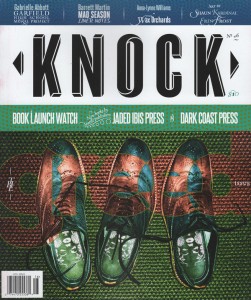 |
| Knock‘s Greed Issue |
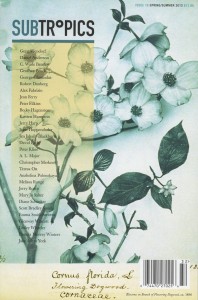 |
| Subtropics |
Glimmer Train has just chosen the winning stories for their April Family Matters competition. This competition is held twice a year and is open to all writers for stories about family of all configurations. The next Family Matters competition will take place in October. Glimmer Train’s monthly submission calendar may be viewed here.
 First place: Ming Holden, of Alameda, CA, wins $1500 for “Keller’s Ranch.” Her story will be published in the Fall 2014 issue of Glimmer Train Stories. [Photo credit: Shyn Midii.]
First place: Ming Holden, of Alameda, CA, wins $1500 for “Keller’s Ranch.” Her story will be published in the Fall 2014 issue of Glimmer Train Stories. [Photo credit: Shyn Midii.]
Second place: Stephen Langlois, of Brooklyn, NY, wins $500 for “Uncle Jerry.” His story will also be published in an upcoming issue of Glimmer Train Stories, increasing his prize to $700.
Third place: Shannon O’Neill, of Richmond, VA, wins $300 for “The South End.” Her story will also be published in an upcoming issue of Glimmer Train Stories, increasing her prize to $700.
A PDF of the Top 25 winners can be found here.
Volume 62 Number 2 of Room features the winners of the 2012 annual writing contest. The judges were Cathleen With (fiction), Miranda Pearson (poetry), and Kathy Page (creative non-fiction). And you can read the honorable mention pieces on the Room website.
Fiction
1st Place: “Skin” by Menaka Raman-Wilms
2nd Place: “Hoax” by Kate Foster
Honourable Mention: “Miles To Inches” by Lynda Schroeders
Poetry
1st Place: “Wilhelm Roentgen (X-rays, 1895)” by Kelly Cooper
2nd Place: “Early Detection” by Annathea (Tia) McLennan
Honourable Mention: “Lying In Bed In The Morning” by Gillian Wallace
Creative Nonfiction
1st Place: “Marking Time With Murakami” by Alison Frost
2nd Place: “Words” by Marion Agnew
Honourable Mention: “Loving Benjamin” by Gail Marlene Schwartz
July’s book reviews are up! This month’s titles run the gamut from poetry about the Antarctic to zombie fiction to a history of A-bomb and Cold War narratives in popular culture/media. Books covered this month are:
Murder, fiction by Danielle Collobert, from Litmus Press
The Earth Is Not Flat, poetry by Katherine Coles, from Red Hen Press
Door of Thin Skins, poetry by Shira Dentz, from CavanKerry Press
A Questionable Shape, fiction by Bennett Sims, from Two Dollar Radio Press
Black Tulips, poetry by José Maria Hinojosa, from Univ. of New Orleans Press
Burn This House, poetry by Kelly Davio, from Red Hen Press
The Dark Gnu and Other Poems, by Wendy Videlock, from Able Muse Press
Under the Shadow, nonfiction by David Seed, from Kent State Univ. Press
Kiku’s Prayer, fiction by Endō Shūsaku, from Columbia University Press
Check them out for some great summer reading.
Aufgabe 12 features a special section edited by Oana Avasilichioaei of poetry translated from the Quebecois French. Avasilichioaei starts her/his? forward by saying, “What does it matter now? What matters now? What is the matter now? What is now’s matter? All possible transversions of Jean-Marc Desgent’s questioning title Qu’importe maintenant? The following work of fourteen writers, presented in American and Canadian English translations from the Quebecois French by twelve translators, are possible responses.”
Read more about the editor and see the table of contents for the issue here.
NewPages hits the road today for Chicago to participate in the 2013 American Library Association (ALA) Annual Conference & Exhibition, held from June 27 – July 2 at McCormick Place.
“The American Library Association, the oldest and largest library association in the world, holds its Annual Conference & Exhibition each summer. The largest such convention in the world is attended by more than 25,000 librarians, library supporters, educators, writers, publishers, Friends of Libraries, trustees and special guests. The conference includes more than 2,000 meetings, discussion groups and programs on various topics affecting libraries and librarians. Approximately 850 exhibiting companies feature the latest in books, online services, automation software, furniture and other materials vital to today’s libraries and librarians. ALA units display professional exhibits highlighting the various aspects of the profession.”
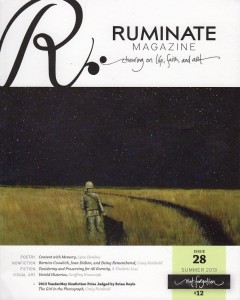 Ruminate‘s Spring 2013 issue features the winners of the 2013 VanderMey Nonfiction Prize, judged by Brian Doyle.
Ruminate‘s Spring 2013 issue features the winners of the 2013 VanderMey Nonfiction Prize, judged by Brian Doyle.
First Place
Craig Reinbold: “The Girl in the Photograph”
Doyle writes, “What seems to be reporting of fact slides ever so deftly into being an essay about love and loss and grace and dignity and memory and how we live and how we are confusions and glories. Just a lovely and moving piece.”
Second Place
Lindsey DeLoach Jones: “Fall in Love, Lourdemie”
Doyle writes, “‘Fall in Love, Lourdemie’ also has a bracing lack of ego and pretense of manneredness–it, too, is about the thorny sea of love, and is written with a clear open honest that was refreshing to read.”
Honorable Mention
Denise Frame Harlan: “Smoke Rings”
Doyle writes, “‘Smoke Rings’ takes a structure . . . and plays with it in creative fashion. A very well-made piece of work.”
Finalists
Caroline Crawford
Kerri Dieffenwierth
Debbie Hagan
Mark Liebenow
Rachel Montany
Emily Rosenbaum
Jeffrey Schneider
Allison Backous Troy
Looking for Oneself: Contributions to the Study of Charles Olson (charlesolson.org) is a website anthology of Ralph Maud’s scholarly journal Minutes of the Charles Olson Society. Website proprietor Peter Grant writes: “Charles Olson (1910-1970) was a prolific poet and scholar with a revolutionary agenda whose outline can be discerned in his seminal manifesto “Projective Verse” (1950). Projective poetics found its fullest expression in Olson’s The Maximus Poems. Ralph Maud, emeritus professor of English at Simon Fraser University, is a dedicated Olson scholar with nine books of and about Olson and 66 issues of the journal under his belt. Looking for Oneself is a stimulating selection of memoirs, essays, transcriptions, reviews and guides to scholarship, with supporting material and an interactive news section designed for the website. Olson is not for everyone. To a few he is a primary thinker for our time. “I would be an historian as Herodotus was, looking/for oneself for the evidence of/what is said.” (“Letter 23,” The Maximus Poems by Charles Olson, copyright 1983, the Regents of the University of California.)”
At the back of each issue of Grain, Jonathan Ball gives us some Haiku Horoscopes. Here are a couple of horoscopes for the staff at NewPages from the new Spring 2013 issue:
Taurus:
Some day your Prince will
Come, and on that great day you
Will be funk-ified
Cancer:
Someone is in the
Kitchen with Dinah–that’s right
She’s cheating on you
The issue itself features new writing by John Barton, Alice Major, and Scott Randall as well as artwork by Zachari Logan.
The Rumpus is now featuring Famous Rapes #1: Old Master Paintings, the first in a series of retrospective collage art by Andrea Baker. The series will focus “on myth, stories, historic events, and cultural attitudes about rape as seen through different time periods.”
The orginal master paintings, Baker comments, show that “rape is the work of heroes, and women swoon before heroes. These women have been fated to suffer the liability of their female form. There is no way out—the only answer is not to be a woman all. Be turned into a tree. Take your own life. Or, if a woman does decide to fight, the only way she can win is by being protected by another man. These paintings document the attitudes of their time, and challenge us to consider how much progress we’ve made.”
This series is excerpted from Baker’s manuscript Famous Rapes.
WASHINGTON – (June 20, 2013) – Despite research on the importance of reading with children from a young age, few parents with kids age eight and younger are engaged in nightly reading, according to a new survey from Reading Is Fundamental (RIF) and Macy’s. The survey, conducted by Harris Interactive, finds that only one in three parents (33 percent) read bedtime stories with their children every night, and 50 percent of parents say their children spend more time with TV or video games than with books. More than 1,000 parents across the U.S. completed the survey online in April.
Results of the survey are revealed as Macy’s and RIF enter the 10th year of a partnership that will deliver its 10 millionth book to children in need nationwide. Be Book Smart launches June 21 and invites customers coast-to-coast to give $3 at any Macy’s register in-store to help provide a book for a child in their local community. Macy’s will donate the full amount to RIF, and customers will receive a coupon for $10 off an in-store purchase of $50 or more. The month-long fundraising effort ends July 21. Last year, Macy’s helped to raise $4.8 million to provide 1.6 million books to children who would not get a new book otherwise.
“Bedtime stories build the foundation for future achievement. For a decade, Macy’s and RIF have worked together to get books and literacy resources to children in need, giving children and parents tools they need to dream big,” said Carol H. Rasco, president and CEO of Reading Is Fundamental. “While much news in this survey is encouraging, there is more work to be done – work that Be Book Smart and our partnership with Macy’s will help make possible.”
Full survey results are highlighted in an executive summary by Harris Interactive, and key findings include:
Findings on the amount of time spent reading:
• Eighty-seven percent of parents say they currently read bedtime stories with their children.
• But only one in three parents (33 percent) read bedtime stories daily with their children.
• Children of families with an annual household income below $35,000 are more likely to watch TV (40 percent) than read books (35 percent).
Findings on printed book use:
• Printed books (76 percent) are the format of choice for most parents of children age eight and younger.
• Twice as many children prefer a printed book (20 percent) over an e-book (9 percent), say parents who read both types of books to their children.
• Less than one in five parents (17 percent) use a combination of printed and e-books.
Existing research on literacy shows the importance of starting early:
• Children who don’t read well by the end of third grade are four times more likely to drop out of high school than proficient readers, according to a report by the Annie E. Casey Foundation.
• Two-thirds of U.S. fourth graders – and more than four-fifths of those from low-income families – are not reading proficiently, according to the 2011 National Assessment of Educational Progress.
Many literacy studies also show a direct correlation between income level and the number of books in the household, creating even more obstacles to developing children’s literacy. RIF works to help overcome these challenges by delivering free books and literacy resources to children and families who need them most.
“We are proud to join our customers in supporting RIF’s work to help children have better access to books and develop a lifelong love of reading,” said Martine Reardon, chief marketing officer, Macy’s. “In talking about our partnership with RIF, I hear so often about the memories created between a parent and a child through reading bedtime stories. This summer, we are especially excited to be hitting a milestone that will enable our 10 millionth book to be distributed as a result of Macy’s partnership with RIF.”
Since 2004, Macy’s has helped raise more than $25.8 million for RIF. Through customer-supported fundraising campaigns, in-store events and volunteer activities, Macy’s has donated funds and resources to further the important message of literacy for future success. Macy’s longstanding support has enabled RIF to promote literacy at all levels, from buying books for children and training educators to providing resources to parents.
Macy’s customers can take part in supporting children’s reading and bedtime stories by donating to the Be Book Smart campaign from June 21 to July 21, taking part in efforts to contribute the campaign’s 10 millionth book to a child in need.
Facebook Sweepstakes
As part of the Be Book Smart campaign, Macy’s and RIF will host a sweepstakes on Facebook to encourage supporters to share information about the campaign and post images of quotes from favorite authors to their personal timelines via a Facebook app. Each week, one winner will be awarded a $500 Macy’s gift card. For official rules and to enter the sweepstakes, visit facebook.com/macys or rif.org/sweeps. No purchase necessary to enter or win a prize.
Methodology
This Bedtime Story survey was conducted online within the United States by Harris Interactive on behalf of Reading Is Fundamental between April 8-15, 2013 among 1,003 parents of kids age 8 or younger. No estimates of theoretical sampling error can be calculated. For complete survey methodology, including weighting variables, please contact Olivia Doherty at [email protected] or 301-656-0348.
About RIF
Reading Is Fundamental (RIF) delivers free books and literacy resources to children and families in underserved communities in the United States. By giving children the opportunity to own a book, RIF inspires them to become lifelong readers and achieve their full potential. As the nation’s largest children’s literacy nonprofit, RIF has placed 410 million books in the hands of more than 39 million children since it was established in 1966. Learn more and help RIF provide books to kids who need them most, visit RIF.org.
About Macy’s
Macy’s, the largest retail brand of Macy’s, Inc., delivers fashion and affordable luxury to customers at approximately 800 locations in 45 states, the District of Columbia, Puerto Rico and Guam, as well as to customers in the U.S. and more than 100 international destinations through its leading online store at macys.com. Via its stores, e-commerce site, mobile and social platforms, Macy’s offers distinctive assortments including the most desired family of exclusive and fashion brands for him, her and home. Macy’s is known for such epic events as Macy’s 4th of July Fireworks® and the Macy’s Thanksgiving Day Parade®, as well as spectacular fashion shows, culinary events, flower shows and celebrity appearances. Macy’s flagship stores — including Herald Square in New York City, Union Square in San Francisco, State Street in Chicago, Dadeland in Miami and South Coast Plaza in southern California — are known internationally and leading destinations for visitors. Building on a more than 150-year tradition, and with the collective support of customers, employees and Macy’s Foundation, Macy’s helps strengthen communities by supporting local and national charities giving more than $70 million each year to help make a difference in the lives of our customers.
About Harris Interactive
Harris Interactive is one of the world’s leading market research firms, leveraging research, technology, and business acumen to transform relevant insight into actionable foresight. Known widely for the Harris Poll® and for pioneering innovative research methodologies, Harris offers proprietary solutions in the areas of market and customer insight, corporate brand and reputation strategy, and marketing, advertising, public relations and communications research. Harris possesses expertise in a wide range of industries including health care, technology, public affairs, energy, telecommunications, financial services, insurance, media, retail, restaurant, and consumer package goods. Additionally, Harris has a portfolio of multi-client offerings that complement our custom solutions while maximizing our client’s research investment. Serving clients in more than 196 countries and territories through our North American and European offices, Harris specializes in delivering research solutions that help us – and our clients-stay ahead of what’s next. For more information, please visit www.harrisinteractive.com.
You shouldn’t judge a book by it’s cover, but it doesn’t mean the cover can’t be appealing. Here are a few magazines that came in this week that made me stop to think, say “wow,” or simply announce to my coworkers, “Hey, check out this cover!”
Here’s this week’s picks:
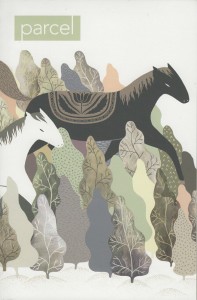 |
| Parcel |
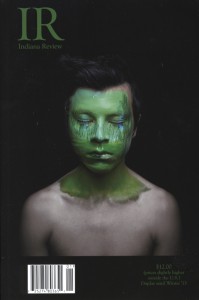 |
| Indiana Review |
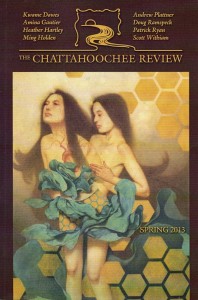 |
| The Chattahoochee Review |
South Florida Arts Journal has a special Virtual Museum site where you can imagine stepping inside a museum, pulling poetry, nonfiction, and fiction off the bookshelves, and gazing at the art on the walls. Vincent Caruso describes it as “a two dimensional space, like a retro point and click video game.” Check it out here.
If you haven’t already caught wind of it, the reviews of literary magazines for the month of June are now posted over at NewPages.com. Magazines featured this month include new issues of Alaska Quarterly Review, Bellevue Literary Review, Carve Magazine, Consequence Magazine, Fairy Tale Review, Irish Pages, Lost in Thought, Mandorla, Moon City Review, Pleiades, Poetry South, Radio Silence, and Slice.
The name Driftless Review (of a new lit mag) refers to the area in SW Wisconsin, NE Iowa, SE Minnesota, and NW Illinois where the geography was left unharmed after the last ice age, 10,000 years ago. “Think deep river valleys,” says Contest Co-Editor and Assistant Prose Editor Bill Yazbec, “plush forests, and cold water streams carved in limestone bedrock.”
But this new magazine, too, has some history. As Yazbec says, “it’s a resurrection of a previous incarnation spearheaded by Russ Brickey.” Published by Platteville Poets, Writers and Editors, LLC, Driftless Review comes out twice a year, in May and December, and features fiction, poetry, flash fiction, nonfiction, interviews, visual artwork, and book reviews. “While we strive to be a respected national literary publication,” Yazbec says, “we always place a focus on emerging writers in the Driftless area.”
But Yazbec is not alone in this endeavor. Fellow editors include Kara Candito, Teresa Burns, Colin Lessig, Russ Brickey, and Laura Beadling. They aim to grow their readership and “become a ‘staunch character’ in the rich tradition of Midwestern literary magazines and journals.”
The publication is geared toward readers that might read the NYT, Rain Taxi, and The Believer, “but also still get the local newspaper delivered in the mornings.” Yazbec says that Driftless Review is for “a reader that is fascinated by what’s out in the world, but content to appreciate the beauty of the Midwest and the kindness of the people here.”
He says the writing they aim to publish has “well-wrought characters in situations that shed some new light on the human condition. Tight, clean, unassuming prose that mirrors our Midwestern sensibility.” He goes on to say that they don’t care “about the poet’s aesthetic allegiances as much as [they] care about the work’s human urgency.”
The first issue features prose by Bonnie Jo Campbell, Lydia Conklin, Sam Snoek-Brown, Matthew Fiander, Paul Crenshaw, Jen Kerske, and Jacob Reecher; poetry by Fleda Brown, Rita Mae Reese, Matthew Guenette, Sam Amadon, Liz Countryman, Kyle McCord, Rodney Wittwer, Justin Bigos, Matthew Mutiva, and Kaela Mellen; and visual art from Lydia Conklin.
Electronic submissions are accepted year-round, and submission guidelines can be found on their website.
“Literature in literature happens more often than we might think, and it’s an effective device. We get a sense of a character’s tastes, which helps open a window into her or his psyche and intellect. Heck, people who love books are usually smart and curious.”
The 11th Annual BrainStorm Poetry Contest pulled in 286 entries this year, and the top three pieces are published in the Spring 2013 issue of Open Minds Quarterly (honorable mentions to be published in the Fall issue). “This contest,” writes the editor, “in preliminary estimates, raised just over $600 for Open Minds Quarterly, and we thank each and every one of our entrants for your support. We thank our judges,too, for their dedication, sensitivity and wisdom in selecting the winners.
The following is a passage from the first place poem, “With My Daughter Comes Autumn” by Kristin Roedell of Lakewood, Washington:
In the front of the house the leaves
of the Japanese maple have fallen;
you rake the last of them into the drain.
The garden is full of you; snails
leave a glistening trail like the slick
feel of your head when it crowned,
the wind separates clumped grass
into smooth strands the way I braid
your hair. . .
Second place goes to Tyler Gabrysh of Victoria, British Columbia for “A Difficult Showering,” and third place goes to Sterling Haynes of West Kelowna, British Columbia for “Down…East Hastings Street – Vancouver, BC.”
You shouldn’t judge a book by it’s cover, but it doesn’t mean the cover can’t be appealing. Here are a few magazines that came in this week that made me stop to think, say “wow,” or simply announce to my coworkers, “Hey, check out this cover!”
Here’s this week’s picks:
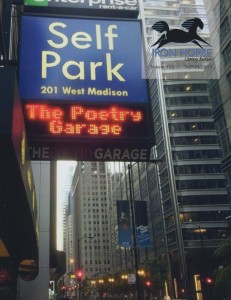 |
| Iron Horse Literary Review |
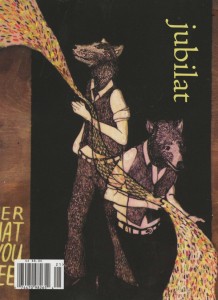 |
| Jubilat |
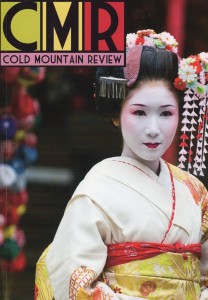 |
| Cold Mountain Review |
The spring issue of Mid-American Review includes the winner and honorable mention for the Sherwood Anderson Fiction Award as well as the winner, honorable mention, and finalists for the James Wright Poetry Award.
Sherwood Anderson Fiction Award
Winner
Woody Skinner: “Things in Slow Motion”
Honorable Mention
Robert Long Foreman: “On Brian’s Dreams of Submarines”
James Wright Poetry Award
Winner
Mark Wagenaar: “The Body Distances (Still Life with Everything in the World)”
Honorable Mention
Jennifer Luebbers: “Family History (I)”
Finalists
Jennifer Luebbers: “Patriotics”
Leslie Williams: “In the Second Half of Life”
Marie Thurmer: “Tennessee State Prison, 1977”
Sara Gelston: “One Story”